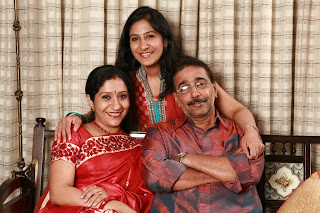Sudarshan Shetty, one of India's
leading artists in installation art, talks about the likely impact of
the Kochi Biennale, while on a brief visit to the city
Photo: Sudarshan Shetty showing an exhibit in Milan
By Shevlin Sebastian
One evening at Fort Kochi, recently,
Sudarshan Shetty, one of India’s premier artists in installation
art, was spending time with painters Bose Krishnamachari and Jyoti
Basu. As they were talking about how Kochi could become a match for
the world-famous Venice Biennale, a large, international ship sailed
past.
“It was such a picturesque scene,”
says Shetty. “It seemed like a preamble to a Biennale. There was
this movement of people from abroad. Definitely, the Biennale
will establish Kochi on the world stage.”
Shetty had come to Kochi to check out
the various locations for the Biennale. So, he did go to the Muziris
site in Kondungaloor, and all over Kochi. “The trip was fantastic,
in terms of understanding the cosmopolitan nature of the city,” he
says. “There is such a lot of history, what with all the cultures
coming in – Christianity in the first century AD, the Arabian
traders from the Middle East, followed by the Portuguese, Dutch, and
the British.”
When he went to Jew Town,
he felt he was being transported back to another world. “I had the
same feeling when I went to Malayatoor, the place where St. Thomas
arrived on his visit to Kerala in AD 52, and to the first Muslim
mosque in India: the Cheraman Juma Masjid in Kodungaloor.”
Kochi is the most appropriate place for
the Biennale. “If you look at the history, it was a place where
liberalism was celebrated,” says Shetty. “Everybody was welcomed
with open arms. The rulers allowed outsiders to do trade and there
were cultural exchanges.”
Asked whether a major city like Mumbai
or Delhi would have been appropriate, Shetty says, “In big cities,
old buildings have been demolished, in the name of development. As a
result, a lot of the history has been erased. But in Kochi, history
is an ongoing reality.”
Shetty has been mulling over the type
of installation art that he could make, which would be ideal for the
setting. “I have been doing a lot of research,” he says. And in
the course of it, Shetty has discovered something new.
“In Mangalore, I have been looking at
old houses,” says the Mumbai-based Shetty, who belongs to the
land-owning Bunt community in Karnataka. “Apparently, a lot of them
were designed by Kerala craftsmen. That was very interesting for me.
I will be taking ideas from our traditional architecture, and
applying it to my own art. I am also going to look at local materials
in Kochi.”
During his visit Shetty had a look at
the refurbished Durbar Hall art gallery. “It is of an international
class,” says Shetty, who has exhibited in London, New York, Milan,
Oslo, Davos, Denmark, Japan and the Netherlands. “It has been
remade beautifully, and the essential character of the building has
been retained. I will give my right hand to exhibit there one day.”
The artist is aware of the
controversies regarding the setting up of the Biennale, but says that
he knows the people behind the project, Bose Krishnamachari and Riyaz
Komu, for more than twenty years. “They are able people and have
achieved a lot in their own fields,” says Shetty. “They have a
lot of international exposure and the expertise to set up a biennale.
Both of them belong to Kerala and that is an added advantage.”
What is also an advantage is the impact
it will have on the people. “These initiatives will change the
sensibility of the people,” says Shetty. “Kochi will become
an art centre. In Baroda, just because an art school exists, there is
a completely different way of viewing art among the ordinary people.
In many middle-class homes I have seen paintings by well-known
artists. A similar change will take place in Kochi once the
international art exhibition comes up.”
In the Kochi Biennale, artists of
international class will be showcasing their art every two years.
“This will improve the standard of the local artists when they are
exposed to international art,” says Shetty. “The fact that I
could see a lot of world class art when I was young made a big
difference to my artistic sensibility. I could understand how things
were made and the processes behind it. The same will happen to the
artists in Kochi.”
(The New Indian Express, Kochi)






.jpg)
+(1).jpg)










